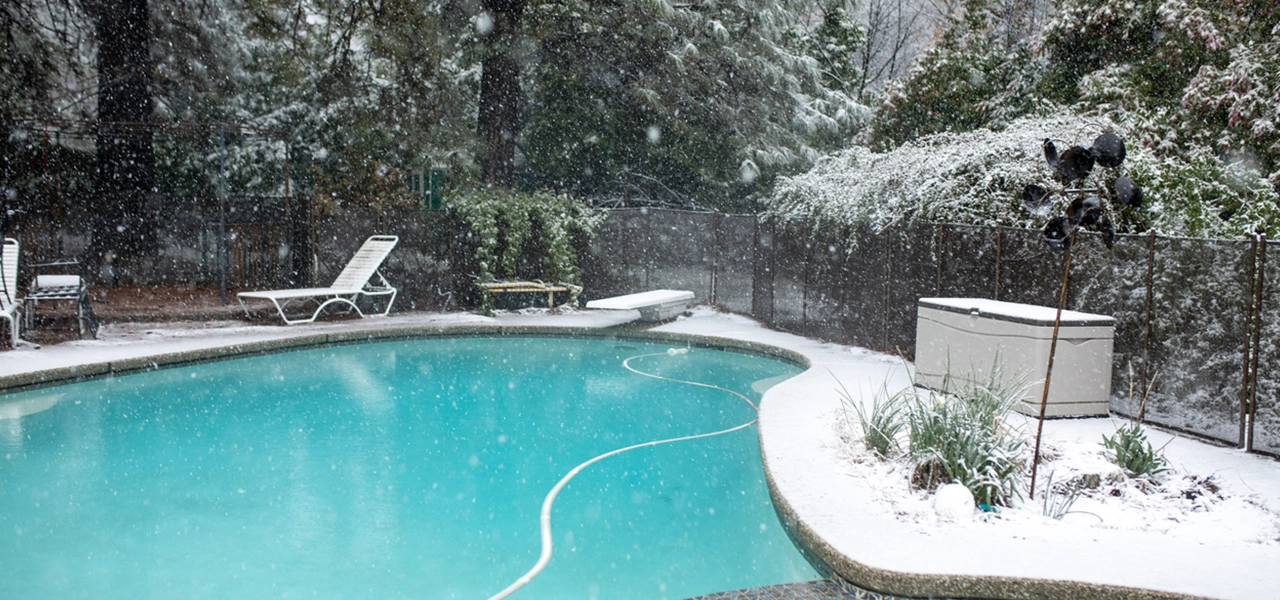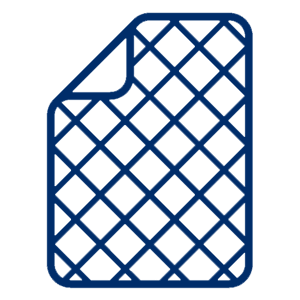FREE Standard Shipping On All Orders $100 or More!*

My Winterized Pool is Leaking Water!
A leaking winterized pool can cause a major headache for any pool owner. Trying to locate and resolve the leak in frigid temperatures is certainly no one's idea of fun. So, if you suspect you have a leaking pool, here are some tips to help you find and fix it.

But first, answer these questions....
- What type of pool: gunite, vinyl or fiberglass?
- What type of cover: water bag or safety cover?
- Was the pool losing water during the season?
- Have you ever lost this much water before?
- Is the water below the returns and pool lights?
Gunite or Vinyl?
The first question is important in that gunite pools rarely leak from the shell, with the exception of around pool skimmers. Vinyl liners can leak from anywhere from small holes or wherever the vinyl has been cut for stairs, returns, pool lights. Both types can leak water through the main drain, but this is not a common area for water loss, except on old pools or large pools that use a spring loaded hydrostatic relief valve.

All pool types must keep water in the pool all the time. It protects the surface and keeps the pool from floating if enough hydrostatic pressure is beneath the pool. Vinyl pools can float, too, when enough water gets underneath the liner.
Liners that leak past the shallow end floor may end up with wrinkles or a damaged pool liner when refilling the pool. Gunite and fiberglass pools can actually pop out of the ground, if enough water weight drains out.
Solid or Safety?
The second question is also important because if you have a safety cover, at least the cover won't fall in the pool when the water drops this much. However, if a heavy snow load falls on an unsupported safety cover, it will damage the springs and possibly break some straps.

Solid pool covers with water bags will fall in the pool, slowly slipping in as the water level of the pool drops. This makes it easier to see that there is a problem with the water level, but if something is not done quickly, you risk contaminating the pool if a messy solid cover falls in the pool.
Keep the water level in the pool no lower than about 15 inches from the top of the pool coping. With not enough water in the pool solid covers fall in the pool, and safety covers are at risk for damage.
If you have a solid pool cover and use a pool cover pump, have you been pumping out pool water, through small holes in the pool cover? This is more common than you think. To avoid this, place your cover pump on an upside down frisbee and position it far away from any known or suspected holes in the pool cover.
Also, if you do have holes in a solid pool cover, tighten up the cover as much as possible, pulling out the slack and placing a few Aqua Blocks or weights around the edge to keep it taut and unwrinkled. If cover holes are near the edge, and your cover is large enough, shift the cover toward one side to bring the hole to the sloped area where the cover rises to meet the pool deck.
Pool Leak History
Questions 3 and 4 are important to the investigation, establishing any pre-existing conditions or trouble with pool leaks. Often, pool owners aren't aware that they are losing water during the season, if it's slow enough and there's a lot of rain. I'll usually ask them how much water they add during a typical summer week. If it's more than 1 or 2 inches, they may have had this leak for some time.
Winter Pool Leak Detection

The point at which the water stabilizes is a good area to look for a leak. Be aware that recent rain or water on top of a solid cover will raise the water level in the pool, so the leak may be below the current water level.
Water level stains (bathtub ring) or debris found stuck to pool surfaces may indicate the level or location of the leak. Looking closely around the stabilized level will usually help you pinpoint the leak, checking the pool surface and any exits of the pool, including the returns and pool light.
Step 1:
Remove the pool cover completely. Fold it up onto one side or end of the pool, where it can sit for several days or a week. Roll it up or weigh it down.
Step 2:
Mark the water level with a marker, or a piece of tape, to know if it is still leaking or has stabilized.
Step 3:

When the water seems to stabilize for a day, inspect the pool walls closely at that point. It's common to see debris sucked into a hole where the water is leaking out, so look for this. You can use a dye syringe to spot holes easily. Shut off the pump so the water calms and squeeze a small amount near any hole underwater. Use goggles, a mask or a clear wide glass vase to see clearly when the dye is sucked out of the pool. Leak dye can be used on anything under the water level that looks like a hole.
If the water level stabilizes at the pool light, consider that the cord conduit may be leaking. You can use a cord stopper to seal up the conduit.
Other common areas for leaking on a vinyl pool (besides the liner itself) are any other areas where the liner has been purposely cut and gasketed. This includes the gaskets for the pool light and the main drains, skimmers, returns and all three sides of steps and seats. If your water level has dropped below these and continues to leak, you can look in other areas, but always consider that there may be more than one leak.
For more information on pool leak detection, check out the article, "Find and Fix Pool Leaks."
Wait Until Spring?
In most winter pool leaks, the option to drop a hose in the pool and fill it up as needed certainly exists, and may be a better solution than fixing a leak during winter. If the pool cover has already fallen in the pool, pull the cover out, clean the pool, and try to find the leak. If you still can't locate the leak, fill the pool (after cleaning), balance the chemistry, and put the cover back on the pool.